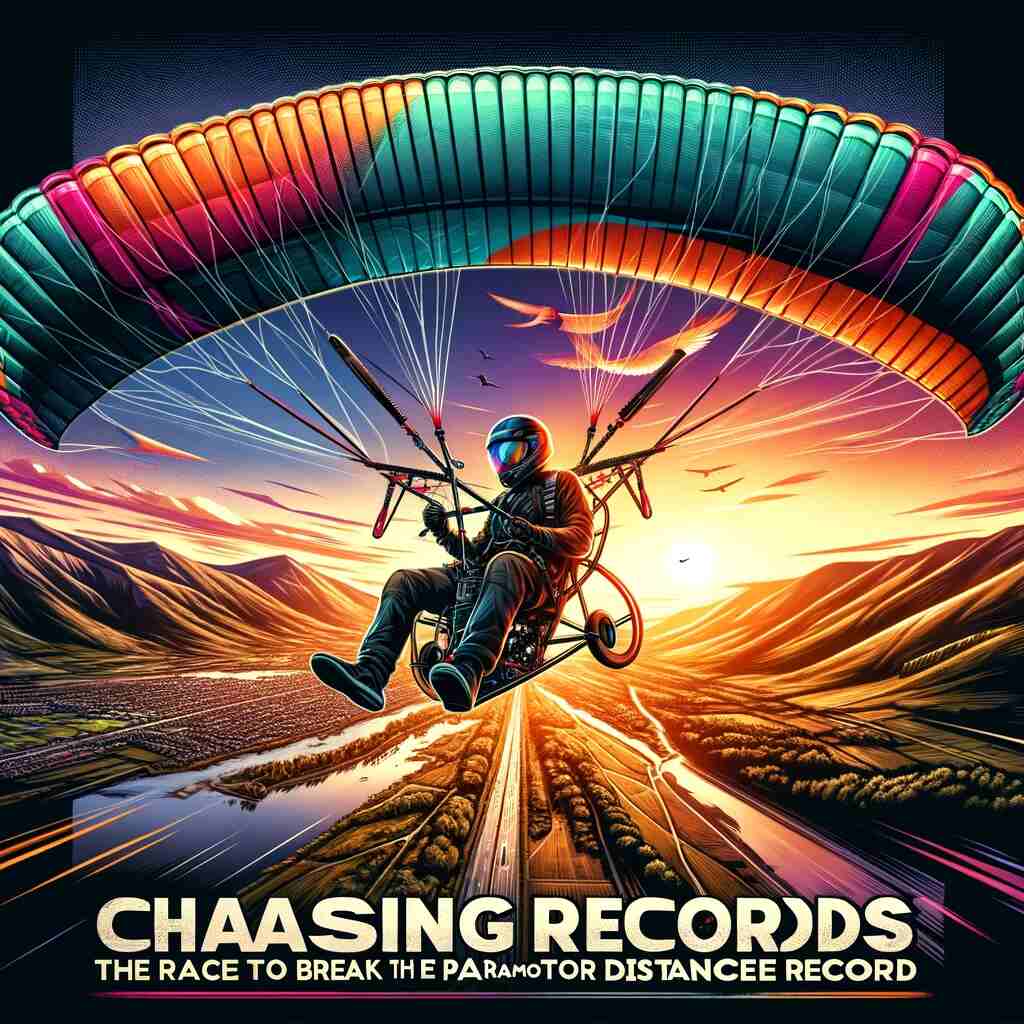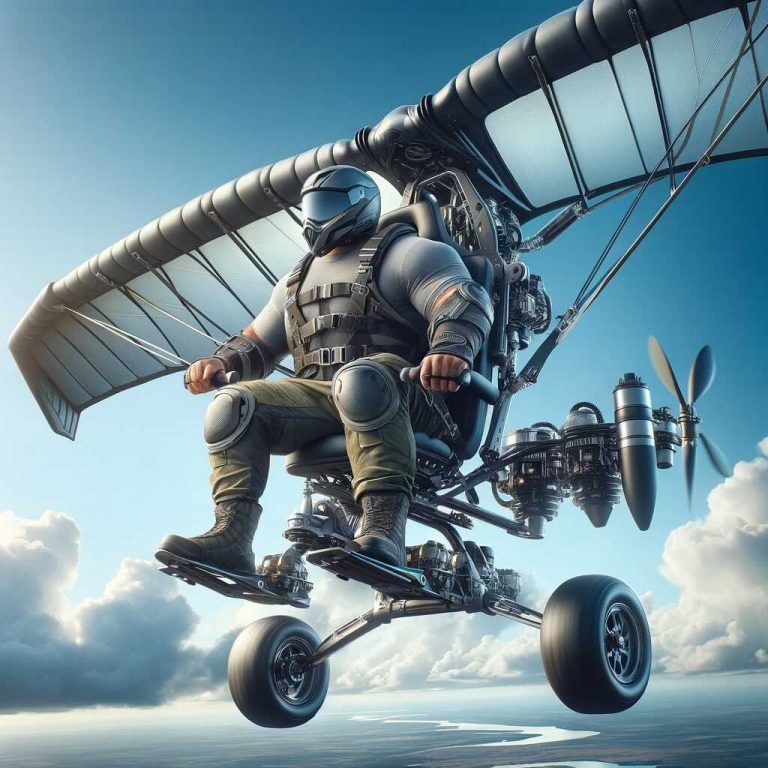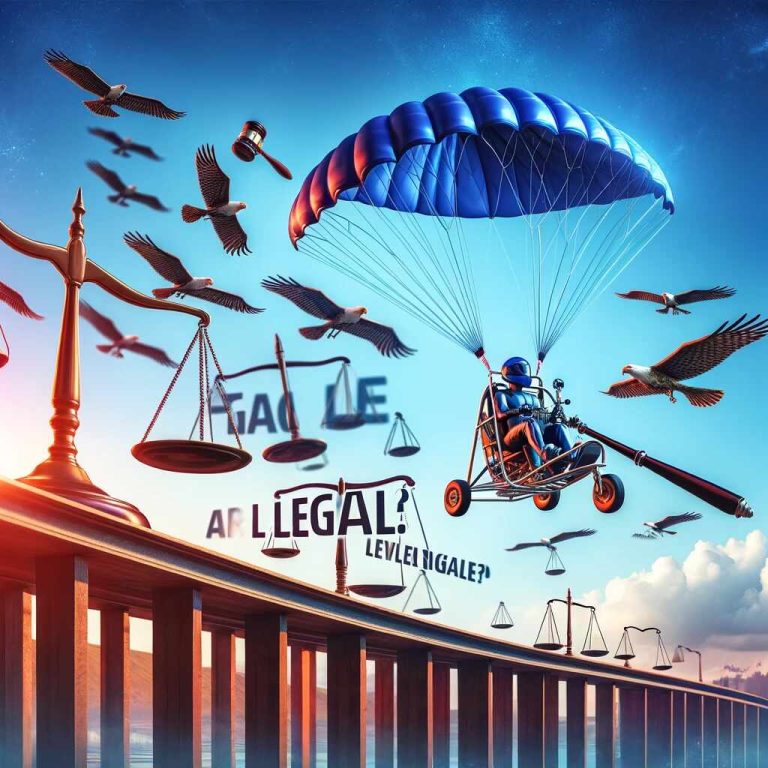Paramotoring, also known as powered paragliding, is an exhilarating adventure sport that marries the freedom of paragliding with the thrust of a motor. But what truly sets it apart is the pursuit of breaking paramotor distance records, a remarkable feat that requires not only skill and experience but also meticulous planning and a deep understanding of equipment and weather conditions. Let’s take a deep dive into the paramotor distance records, exploring what they entail, who the record-holders are, the strategies employed to break them, and the future of this thrilling sport.
Unveiling Paramotor Distance Records
A paramotor distance record is a remarkable accomplishment achieved by a pilot who covers the longest distance possible without landing. The measurement of this distance relies on GPS technology and necessitates validation by a reputable third-party organization, such as the FAI (Fédération Aéronautique Internationale). These records are not just a testament to the pilot’s skill but also a showcase of their ability to navigate diverse weather conditions and display endurance during prolonged flights. Additionally, breaking records serves as a catalyst for advancing paramotor technology and inspiring other pilots to push their limits.
Current Paramotor Distance Record Holder
As of the latest available data, the current paramotor distance record is held by Lauri Kadakas, an Estonian pilot. On March 9, 2019, Lauri Kadakas achieved an astonishing straight-line distance of 1,132.7 kilometers (703.8 miles) in Australia. However, it’s important to note that this record is yet to be officially ratified by the FAI. Nonetheless, Kadakas’s extraordinary feat is poised to surpass the previous record set by Ramón Morillas, which stood at 1,105 kilometers (687.9 miles) since 2007.
Kadakas’s record-breaking journey comprised a grueling 15-hour non-stop flight, commencing from Charters Towers airport in Queensland and concluding near Tablelands. He relied on a Mac Para Paradox 27 wing and a Zero Gravity HPR225 motor. What sets his flight apart is not just the remarkable distance but also the meticulous planning and real-time adjustments he made during the flight, underscoring the immense skill and preparation required to break such records.
Strategies for Breaking Paramotor Distance Records
Breaking a paramotor distance record is a formidable challenge, demanding careful planning, exhaustive preparation, and flawless execution. Here are four key strategies that pilots employ to enhance their chances of success:
1. Planning and Preparation: Pilots engage in meticulous planning and preparation before attempting to break the current record. This involves selecting the most suitable equipment, including a high-performance wing and a reliable engine with sufficient fuel capacity. Extensive research is necessary to identify optimal routes, understand local weather patterns, and anticipate potential hazards. Preparing for unexpected situations, such as engine failure or abrupt weather changes, is vital to ensure a safe and successful flight.
2. Weather Conditions: Weather plays a pivotal role in the success of a paramotor distance record attempt. Pilots must choose the most favorable weather conditions, characterized by stable air currents and tailwinds that facilitate covering more distance. Weather forecasting tools and apps provide pilots with real-time information on wind speed, direction, and other weather-related data, empowering them to make informed decisions.
3. Physical and Mental Preparation: Achieving a new paramotor distance record necessitates exceptional physical and mental endurance. Pilots must maintain peak physical condition to endure the extended hours of flight, and they must also be mentally resilient to overcome any challenges they encounter. Pilots can prepare by undertaking practice long-distance flights and improving their endurance through regular exercise and training.
4. Safety First: Safety takes precedence during a paramotor distance record attempt. Pilots must ensure they possess essential safety equipment, such as a reserve parachute and a GPS tracker, while also receiving comprehensive training in emergency procedures. Having a dedicated support team on the ground is essential to provide assistance in case of emergencies.
Inspiring Attempts in Paramotor Distance Records
Over the years, several pilots have embarked on famous paramotor distance record attempts, captivating audiences and motivating others to pursue their own record-breaking dreams. Here are four notable examples:
1. Eric Dufour and Michel Carnet
In 2006, Eric Dufour and Michel Carnet set out to break the then-existing paramotor distance record of 823 kilometers (511 miles) set by Belgian pilot Nicolas Tièche. The daring duo embarked on a remarkable journey, flying from Vannes in France to Castellón in Spain, covering a staggering 1,103 kilometers (685 miles) in 22 hours and 15 minutes. Unfortunately, their flight was not officially recognized by the FAI due to issues with their GPS equipment.
2. Ramón Morillas
Besides holding the current paramotor distance record, Ramón Morillas attempted to break his own record in 2016. Regrettably, he was forced to land after flying 640 kilometers (398 miles) due to engine problems.
3. Mathieu Rouanet
In 2019, French pilot Mathieu Rouanet set his sights on breaking the current paramotor distance record. He embarked on a journey from the town of Bonneville in France to the island of Corsica, covering a distance of 805 kilometers (500 miles) in 16 hours and 12 minutes. Although he fell short of breaking the record, Rouanet’s attempt showcased the incredible endurance and skill required for long-distance paramotoring.
4. Yannick Delonglée
In 2020, French pilot Yannick Delonglée made an ambitious attempt to break the paramotor distance record by flying from Saint-Nazaire in France to Menorca in Spain. He covered a distance of 1,008 kilometers (626 miles) in 17 hours and 48 minutes, establishing a new record for the longest unrefueled paramotor flight. However, his attempt was not officially recognized by the FAI due to issues with his GPS equipment.
While not all attempts resulted in records, they continue to inspire pilots to push the boundaries of the sport and strive for their own record-breaking achievements.
The Future of Paramotor Distance Records
The future of paramotor distance records is a promising one, marked by technological advancements and an ever-evolving understanding of equipment and safety measures. Here are some possibilities for the future of paramotor distance records:
1. Advancements in Equipment: As technology continues to advance, paramotor equipment is poised for improvements that will enable pilots to cover greater distances with greater ease. Expect developments in materials, wing designs, and engine technology that offer longer flights, improved fuel efficiency, and increased speed.
2. Breaking the 1,000 km Mark: While the current paramotor distance record stands at an impressive 1,132.7 kilometers (703.8 miles), there remains room for improvement. Future pilots may set their sights on breaking the 1,000 km mark and establishing new records for the longest paramotor flight without landing.
3. Solo vs. Tandem Flights: Currently, most paramotor distance records are achieved by solo pilots. However, we may witness a surge in tandem flights, where two pilots collaborate to cover greater distances. Tandem flights can facilitate longer journeys and provide an opportunity for less experienced pilots to attempt record-breaking flights with the guidance of a more seasoned partner.
4. Greater Emphasis on Safety: As paramotoring gains popularity, safety will take center stage during record attempts. Safety equipment, including advanced reserve parachutes and GPS trackers, will become more sophisticated. Moreover, pilots will receive comprehensive training in emergency procedures, further safeguarding their well-being.
In Conclusion
Paramotor distance records epitomize the pinnacle of the sport, showcasing the boundless potential of powered paragliding and the indomitable spirit of pilots who chase their dreams with unwavering determination. The current record holder, Lauri Kadakas, has set an awe-inspiring standard with his 1,132.7 kilometers (703.8 miles) flight, serving as an inspiration to fellow pilots eager to break records.
Breaking a record isn’t merely about distance; it’s about meticulous planning, exhaustive preparation, and flawless execution, all underpinned by a steadfast commitment to safety. Famous attempts by pilots like Eric Dufour and Michel Carnet, Mathieu Rouanet, and Yannick Delonglée highlight the extraordinary endurance and skill required for long-distance paramotoring. As technology continues to evolve, we can anticipate further advancements in equipment and safety measures, empowering pilots to achieve new milestones and motivating a fresh generation of paramotor enthusiasts.
Ultimately, paramotor distance records showcase the unwavering passion of pilots who dare to defy gravity and soar to new heights, leaving a trail of inspiration in their wake.




